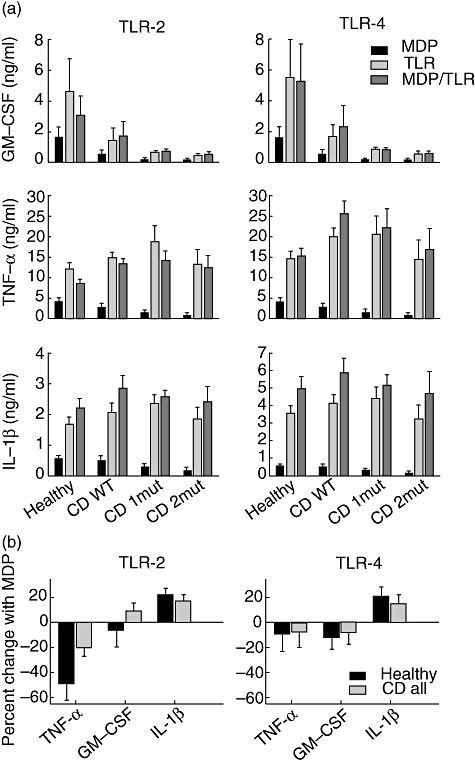Fig. 2.

Toll-like receptor (TLR)-2 and TLR-4 agonists induce granulocyte–macrophage colony-stimulating factor (GM-CSF) secretion through nucleotide oligomerization domain 2 (NOD2)-dependent and -independent pathways. (a) Peripheral blood mononuclear cells (PBMCs) from healthy controls and Crohn's disease (CD) patients were stimulated in presence of either 20 ng/ml muramyl dipeptide (MDP) or 10 µg/ml peptidoglycan (PGN) or 1 µg/ml lipopolysaccharide (LPS) or both MDP and a TLR agonist for 18 h. Supernatants were assessed for GM-CSF, tumour necrosis factor (TNF)-α and interleukin (IL)-1β, as described in the Methods. (b) To calculate the inhibitory effect by MDP on TLR-induced TNF-α production, the individual contribution by MDP and TLR were subtracted from the combined contribution by MDP/TLR. This TNF-α production was expressed as percentage of the production obtained with the individual MDP and TLR stimulations. Healthy: healthy controls carrying none of the three common NOD2 polymorphisms; CD WT: patients carrying none of the three common NOD2 polymorphisms; CD 1mut: patients carrying one of the three NOD2 polymorphisms; CD 2mut: patients carrying two or more of the three NOD2 polymorphisms. Error bars indicate standard error of the mean. See text for statistically significant associations.
